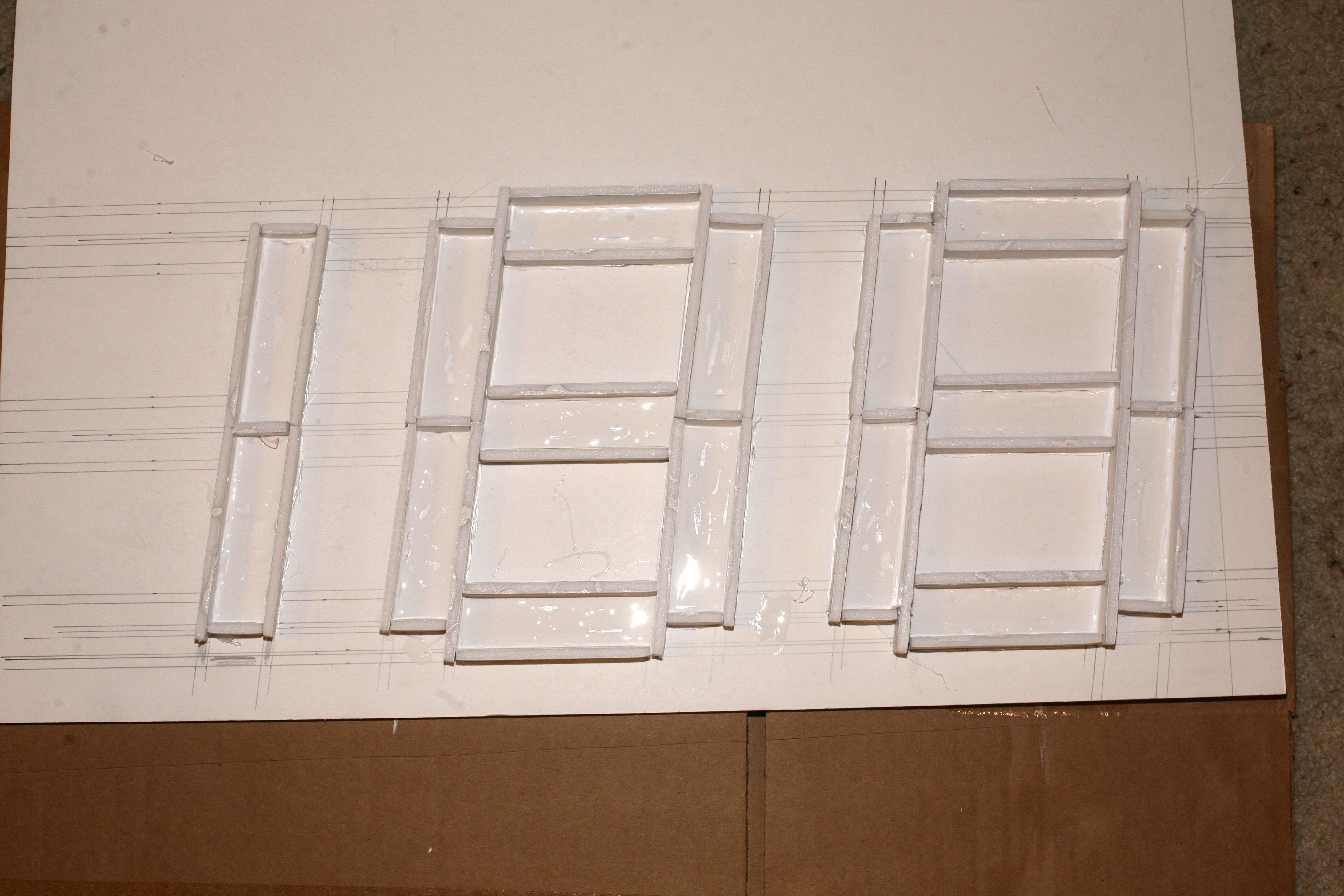The original heroineclock had a thermometer. It could show temperature fulltime or oscillate between time & temperature. It oscillated painfully for 10 years. It could be resurrected as a fulltime thermometer, but it uses too much power. There are 33 LEDs known to be good in Heroineclock 1 & 23 spares of Heroineclock 1's vintage. A temperature display of Heroineclock 2's size needs 80 + at least 5 spares.
The framework of Heroineclock 1 could be left intact, with all the electronics replaced, LEDs rewired in series. Heroineclock 2 left behind enough transistors to do the job. Voltage regulators from Heroineclock 1 could be reused. A slightly larger display could be made with 3 LEDs per segment.

3 LEDs per segment limited the new display to 8" tall. Younger lions could make out 6" tall digits from anywhere in the apartment, so old lions might be still able to read it with a bit of effort.
The LED count limited it to 0-199 in Fahrenheit. Imperial is still the cheapest unit to display, as much as binary imperial would be even cheaper.
Lessons learned from Heroineclock II were applied to thermometer II.
Far fewer pieces of foam were cut for each digit. The foam length was limited by the amount of hot glue which would stay hot.
Apply hot glue to the paper side of the joints, not the foam side. It melts foam so nothing fits flush. Don't do what Adam Savage does.
Glue middle segments of each digit first, then work outward. This way, segments won't end up being too long for the remaneing space & the digits will naturally overrun the outlines.
Try to hold the segments vertical until the glue sets. The glue fills in the gaps from lousy cutting.
Measurements don't have to be crazy accurate, because the cutting & gluing is terrible anyway.
 lion mclionhead
lion mclionhead
Discussions
Become a Hackaday.io Member
Create an account to leave a comment. Already have an account? Log In.